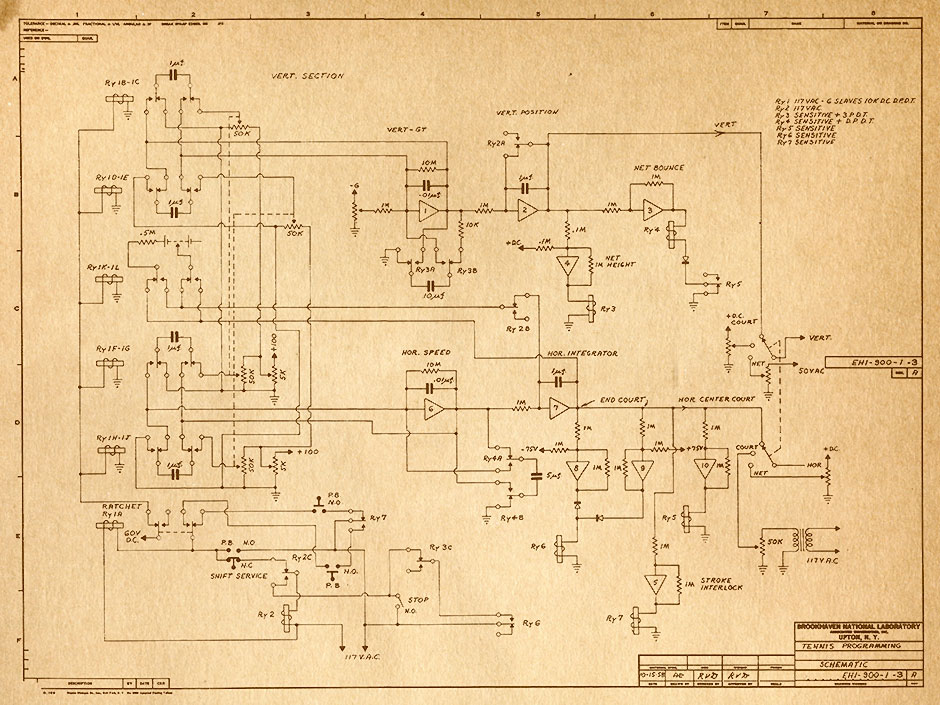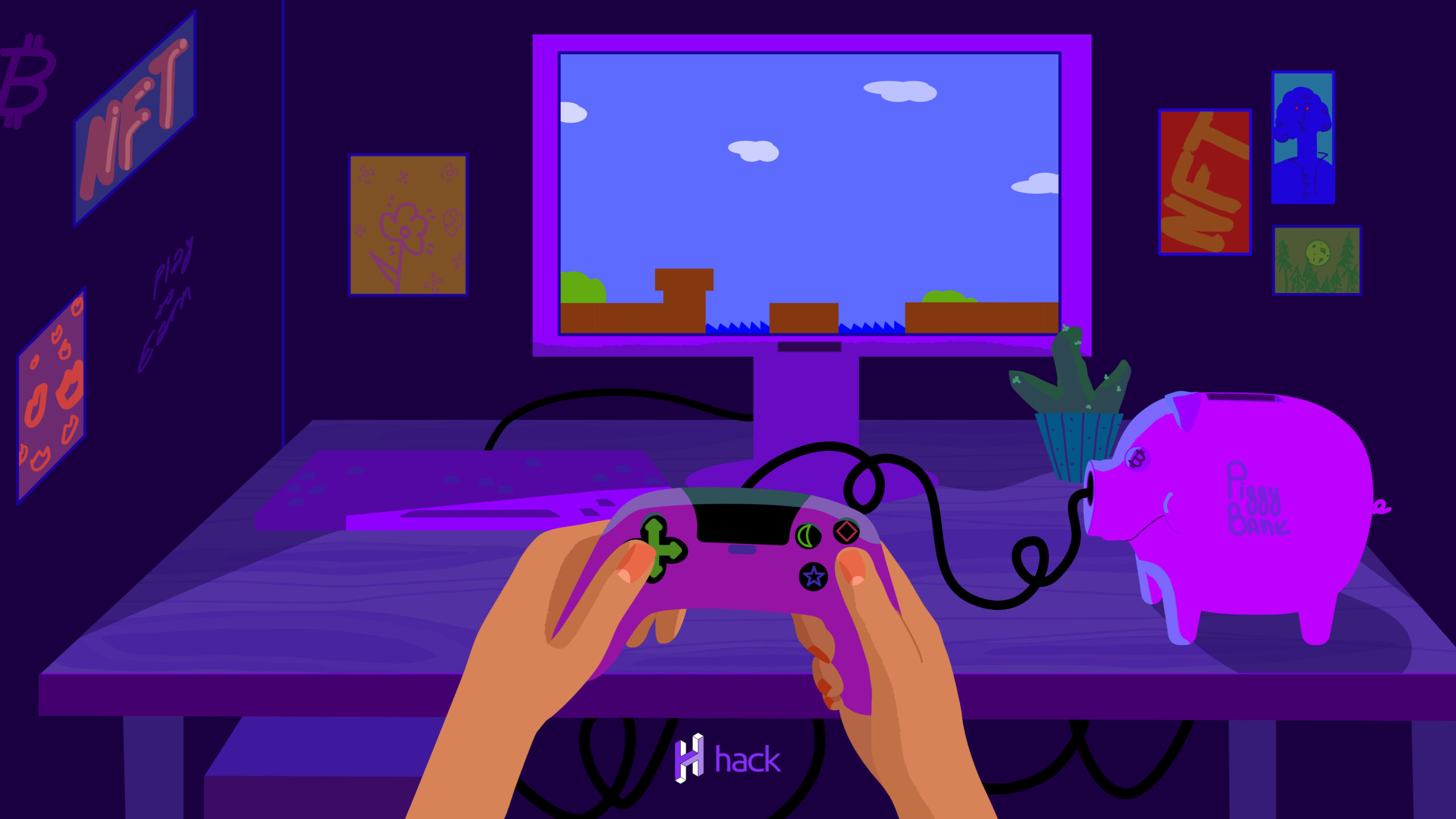It all started in 1958 when a physicist named William Higinbotham created what is said to be the first-ever video game where two people played electronic tennis game with separate controllers that connected to an analogue computer and used an oscilloscope for a screen.

Fifty years ago the gaming industry started to bloom. From the golden age of arcade games, through World of WarCraft, games developed at a quick and sure pace.
Nowadays (in 2021), the video gaming industry is estimated to be worth $178.73 Billion, which is an increase of 14.4% from 2020. This is a marked difference to what was predicted in 2016, forecasting a total worth of $90.07 Billion for the same period – a huge 76.8% difference between the two figures demonstrating that we could see a further acceleration in growth.
These days video games involve sophisticated phycological and technological methods to build an enormous variety of digital worlds, deploying a multitude of game mechanics, visual aesthetics, and narrative experiences with the sole purpose – to get their participants into living and evolving in meta worlds. Building a character, levelling up and spending countless hours amassing items gives that self-satisfaction of accomplishment, feeding that dopamine feeling of achievement and assuring their success is genuine, but we all know one thing…
Games are managed by centralized entities
In a previous article called “ Games on Blockchain or Blockchain for Games?” we discuss the issue of transparency, trust and why games need blockchain. In general – effort, precision and planning are rewarded in games with twisted plots where players build up and customize characters by trading and buying assets that can be purchased with real-world money or earned as the player progresses in the game in order to level up and complete missions. These games have an economy inside them, which is completely controlled by the developers and the company that owns them.
It is quite clear that, over the years, the psychology around games has changed. Players want bigger roles. They want to buy and own assets they have played for so many hours to collect. They also crave unique experiences as well as the freedom to shape the overall future of gaming. They want fairness and transparency when it comes to transactions and ownership of assets, so games need to become more neutral for players who work hard or spend their money to acquire them. But since these assets are virtual(in a metaverse), game developers can just produce an unlimited amount or rig the market by providing them to certain players, which contradicts the meaning of the games – to be fair.
But every issue has a solution! A new generation of video games is using new technologies like blockchain and new methods like play-to-earn to offer built-in ownership of in-game currency and items enabled by cryptocurrencies and non-fungible tokens, which hold a direct connection to a larger, interconnected digital economy with real-world value.
What are play-to-earn (P2E) games?
Play-to-earn games aim to provide rewards with real-world value.
While people have been earning money from playing video games for many years through practices such as “gold farming” and unofficial marketplaces for in-game items, the emergence of blockchain technology and non-fungible tokens (NFTs) has, quite literally, changed the game in the last year or so.
NFTs, are cryptographically one of a kind tokens that can be used to prove ownership of content such as images or music. In blockchain games, they enable users to take ownership of in-game items – guns, props, clothes, cars, lands, planes, characters, etc.
Unlike in regular games, where in-game items are owned by the companies that created the game, NFTs enable players to actually own the assets they purchased or earned. Moreover, once you own the NFT, you can freely sell it outside of the platform where it was created – something that’s not possible with Web 2.0 games.
That means that NFTs representing in-game items can be traded/sold for fiat currency on any NFT marketplace. And because those NFTs have scarcity, they have real-world value.
With regular games the relationship is one-way: you pay for the game, and unless you’re a professional player or a streamer with a big influence, you will never be able to monetize your playtime. By contrast, blockchain gaming (or Web3) gaming offers players the opportunity to earn real money.
Types of monetization in Web3 gaming:
Although monetising online video games is not new, NFT games have pushed the frontier of gaming income with new types of player ownership. In the past, dedicated players created wealth by building an online community of followers or by selling high ranking gaming accounts. Now, there is much more to benefit from blockchain technology. Here are some types of game monetizations:
- Gamers can own all the in-game assets from their hard work and hours of playing (like weapons, gold bars, avatars, costumes, land, etc), which they can be able to convert to real-world money by selling them on marketplaces;
- Gamers can vote and make decisions to improve the gaming experience;
- Gamres can even own a part of the game by investing in its development.
The rise of play-to-earn/blockchain games
Many emerging blockchain-based games are working to give players verifiable digital ownership of their in-game items through NFTs and connecting in-game currency to real-world markets through game tokens. These games are able to offer players a fair, unbiased, and tangibly beneficial gaming experience through permissionless, player-owned economies.
Through blockchains, games can become play-to-earn, with player-driven value accurately allowing the birth of robust and unique economies. Though game development elements might still be centralized, both in-game items in the form of NFTs and player marketplaces can be permissionless. In these open platforms, no entity can revoke the ability to trade items or take in-game items away from players.
Built upon transparency, decentralization, and collective decision making, blockchains and NFTs can act as a foundational starting point for new games to build from the ground up with these values in mind, or for existing games to begin moving towards more transparent systems—opening up opportunities for truly player-owned games.
The paradigm shift toward play to earn is already beginning within the blockchain ecosystem. In the past year, a rising wave of play-to-earn games has gained prominence.
Axie Infinity, Gods Unchained, My DeFi Pet, and more have simply given the world a first taste of what P2E gaming looks like.
True to the core values of blockchain technology, these play-to-earn games aim to become increasingly decentralized, by establishing plans to move towards community governance through the staking of game tokens. Major decisions surrounding the future of the NFT marketplace, the movement of treasury funds, and payments will be decided by a majority vote based upon this system. The community receives an increasing amount of power when tokens are delivered to active players, giving decision-making power to those who are most invested in the game and pioneering the idea of a player-owned game.
A variety of blockchain projects have come up with their own spin on the play-to-earn concept. Trading card battle games bypass the need for fungible tokens by allowing players to win randomized digital cards just by playing. Players can then sell these valuable NFT cards on the market, earning rewards for their time and effort.
This is why blockchain gaming and P2E are, for the most part, synonymous terms. Nearly all blockchain-based games are play-to-earn because they all offer verifiable ownership of in-game items and currencies that have real-world value. Any genre of game can be adapted to this format.
It’s important to remember that decentralized governance is not a guarantee. Players must understand that the verifiable ownership of digital assets is only one piece of the puzzle—at the base level, these games give players access to open marketplaces and assign real-world value to in-game items. When it comes to controlling these in-game assets from a gameplay and utility standpoint, blockchains, both in culture and technology, offer a good starting point for not only player-owned economies but also for communal governance that facilitates truly player-owned games.
Final thoughts:
Gaming is for sure a technologically savvy industry. With the metaverse’s promise of an interoperable world, blockchain’s decentralization and NFTs enabling in-game items ownership, it could act as a powerful catalyst for the play-to-earn ecosystem. That is what Web3 gaming is all about – You don’t just have the game itself. You also have the game beyond the game.
That is why the industry’s statistics keep hitting ATHs and as the Web3 marketplace grows, more and more gaming communities are starting to adopt crypto and NFTs every day. Though many of the play-to-earn blockchain games are yet to be released, there’s evidently a market waiting to get their crypto paws on them. And judging from the success of those currently out, the future of play-to-earn gaming is upon us, and it will be interesting to see how quickly this future unfolds.
For this reason, hack.bg is building a brand new product – OmniLudus – a go-to platform for every P2E Web3 gaming, which will showcase you all the info you need to keep track of the latest and hottest trends in the P2E industry.



